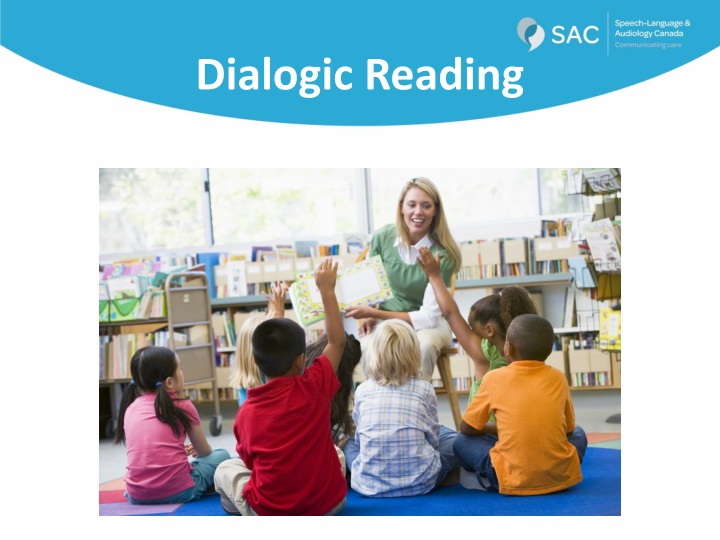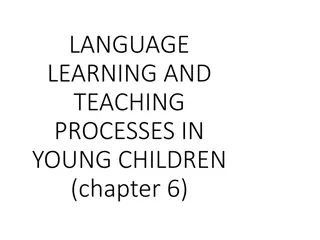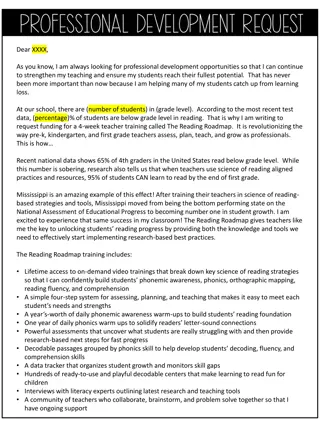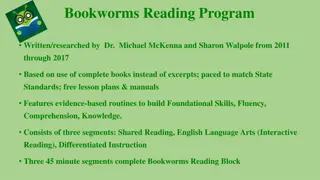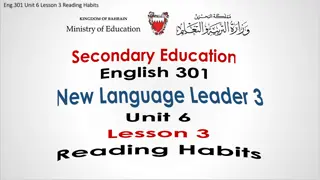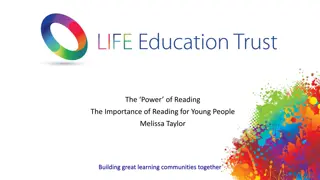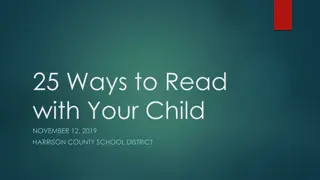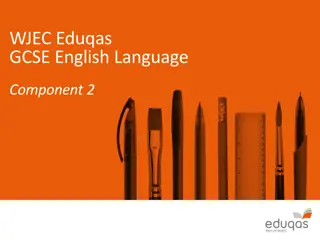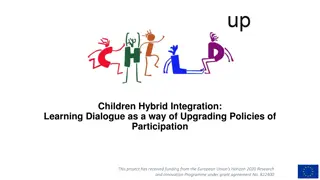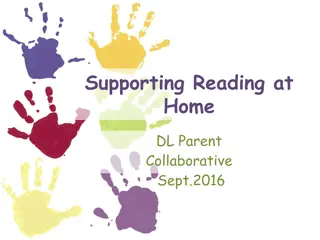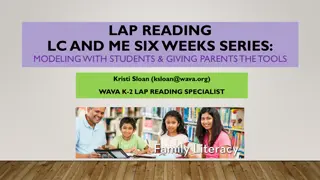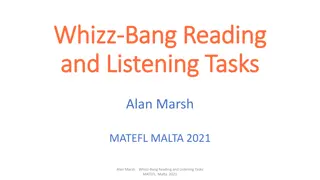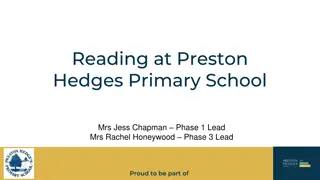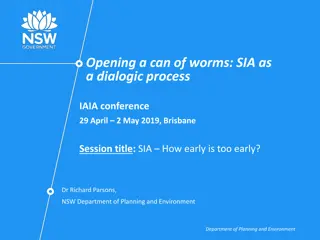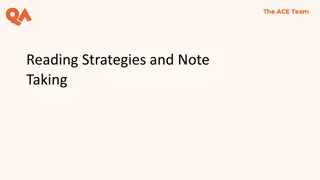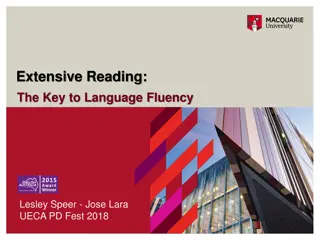Comprehensive Guide to Dialogic Reading for Language Development
Dialogic Reading is a systematic activity where an adult and child engage in shared reading, focusing on building oral language through interactive techniques like reading aloud, storytelling, and making connections with the child's experiences. This method enhances vocabulary, language skills, and communication for various learners, including those with language delays and multilingual backgrounds. By incorporating key elements like vocabulary highlighting, asking questions, and connecting the story to the child's life, Dialogic Reading promotes active engagement and language gains.
Download Presentation

Please find below an Image/Link to download the presentation.
The content on the website is provided AS IS for your information and personal use only. It may not be sold, licensed, or shared on other websites without obtaining consent from the author.If you encounter any issues during the download, it is possible that the publisher has removed the file from their server.
You are allowed to download the files provided on this website for personal or commercial use, subject to the condition that they are used lawfully. All files are the property of their respective owners.
The content on the website is provided AS IS for your information and personal use only. It may not be sold, licensed, or shared on other websites without obtaining consent from the author.
E N D
Presentation Transcript
Outline What is Dialogic Reading? What are the benefits of Dialogic Reading? Dialogic Reading step-by-step Special considerations for learners of an additional language
The number of verbal exchanges may matter more than number of words MIT News -Romeo et al., 2018, 2021
Language delay Between 5 and 12% of preschoolers have language delays. Average student Struggling student Reproduced with the permission of Sabine de Meester -Wilson & Law, 2019
What do you know about Dialogic Reading?
What is Dialogic Reading? A systematic reading activity shared by the child and adult whereby the adult intentionally focuses on building oral language through: reading aloud; involving the child in the storytelling; making connections with child s experiences; and going beyond the script of the book by: o predicting; o comparing; o reflecting; and o expanding. -Whitehurst, 1992
Why Dialogic Reading? From the family s point of view, joint book reading is extremely important because often, it gives parents something to talk about. Books expose children to vocabulary that they may not otherwise hear. Dialogic reading results in language gains for: o neurotypical children from high and low SES backgrounds; o childrenwith language delay; and o multilingual learners. Even as compared to regular reading, dialogic reading results in: o greater vocabulary gains; and o greater gains in other areas of language. Educators, teachers, and parents can be successful at dialogic reading. -Hargrave & Senechal, 2000; Brannon & Dauksas, 2014; Mol, Bus, de Jong, & Smeets, 2008; Ramsey, 2021
Three key elements of Dialogic Reading Highlighting vocabulary Asking questions Connecting the book to the child s life or connecting the ending of the story to the beginning
PEER sequence Each time you read to children, remember the acronym PEER: Prompt the child to say something about the book. What s that? A truck. She paint a truck. o Evaluate the child's response. You re right, but it s a special truck a fire truck. o Expand the child's response by rephrasing and adding information to it. She painted a fire truck. o Repeat the prompt to make sure the child has learned from the expansion. The girl painted a fire truck. o
CROWD sequence There are five ways to prompt children to practice new oral language forms that the adult will then expand with rich language models. You can remember these with the acronym CROWD: Completion prompts o You leave a blank at the end of a sentence and get the child to fill it in. Used in books with rhyme or books with repetitive phases. E.g., "He huffed and he puffed and he blew the house ____,".
CROWD sequence Recall prompts o These are questions about what happened in a book a child has already read. E.g.: "Can you tell me what happened to the wolf in this story? Used at the beginning of the book if the child has read the book before, or at the end of a book that they have never read. Open-ended prompts o Focus on the pictures in books. E.g.: "Tell me what's happening in this picture."
CROWD sequence Wh-prompts o Usually begin with what, where, when, why, and how questions. Also focus on the pictures in books. E.g.: "What's this called?" while pointing to an object in the book. Distancing prompts o Ask children to relate the pictures or words in the book they are reading to experiences outside the book. E.g.: while looking at a book with a picture of a pig, "Remember when we went to the farm last week; what colour was that pig?"
Prompt levels Level 1 Prompts o Completion prompts o Recall prompts o What, where, and when question prompts Level 2 Prompts o Open-ended prompts Level 3 Prompts o Distancing prompts Make connections with the child s life or connect the beginning of the book with the ending.
The right book Large, colourful illustrations Limited text Conducive to building language, building conceptual knowledge, and making links with child s own experiences Awards for childrens literature: Award-Winning and Notable Kids Books
Repeated readings and vocabulary Reading the same book four times results in vocabulary learning gains for children up to Grade 2. Only teach vocabulary after a 1streading (unless one or two words really need to be learned before). Teach four to six new word definitions with each reading. As each sentence with a word to be explained is reached, reread the sentence and ask whether anyone knows what the word means. If someone gives a plausible explanation, agree and move on. Otherwise, provide an explanation. Facilitate transfer of similar words across languages (banana/banane). -Biemiller & Boote, 2006
The right students Age 3 to Grade 2 (ages 3 to 5 = most studied) Children learning a first or an additional language Neurotypical children or children with diverse education needs Class wide, small groups, or 1:1
Graphic organizers can help Story Map Template Story Map Template Filled
Preparing the book https://connectmodules.dec-sped.org/connect- modules/learners/module-6/step-3/b- definition/creating-the-prompts/ (1:48)
Introducing the book https://connectmodules.dec-sped.org/connect- modules/learners/module-6/step-3/b- definition/conducting/ (2:49)
Reading the book https://connectmodules.dec-sped.org/connect- modules/learners/module-6/step-3/b- definition/conducting/ (3:32)
Closing the book https://connectmodules.dec-sped.org/connect- modules/learners/module-6/step-3/b- definition/conducting/ (0:55)
Special considerations for learners of an additional language What will you do to help them understand the story? o Gesture o Rephrase o Repeat o Support theme with other multimodal materials What will you do to facilitate their participation? o Miming o Drawing o Filling in the blank What words do you want them to learn? o Cognates o Words with multiple meanings o Verbs o Academic vocabulary
Facilitating language transfer and bootstrapping e.g.: Linking languages through a bilingual read-aloud project -Lyster, Collins, Ballinger, 2009
Get the rest of the family involved too! Dialogic reading with attention-deficit-hyperactivity disorder (ADHD) kindergarteners: Does reading with parents or siblings enhance their language development? Results show that both Dialogic Reading (DR) with parents and siblings effectively enhanced language skills and reading interest in students with ADHD. In addition, those students who read with their older siblings demonstrated greater improvements in their expressive vocabulary, character reading skills, morphological awareness, phonological awareness, and reading interest yet achieved a smaller growth in their listening comprehension compared with those who read with their parents. These findings showed the positive effects of DR on the language development of students with ADHD and highlight the importance of involving siblings in home literacy activities to facilitate the language development of these students. -Yang et al., 2022
References Ard, L. M. & Beverly, B. L. (2004). Preschool word learning during joint book reading: Effect of adult questions and comments. Communication Disorders Quarterly. 26(1), 17 28. Biemiller, A., & Boote, C. (2006). An effective method for building meaning vocabulary in primary grades. Journal of Educational Psychology, 98(1), 44 62. Brannon, D., & Dauksas, L. (2014). The Effectiveness of Dialogic Reading in Increasing English Language Learning Preschool students's Expressive Language. Early Childhood Education, 5, 1-10. Buysse, V., Winton, P., Rous, B., Epstein, D., & Cavanaugh, C. (2011). CONNECT Module 6: Dialogic Reading Practices. Chapel Hill: University of North Carolina, FPG Child Development Institute, CONNECT: The Center to Mobilize Early Childhood Knowledge. Hargrave, A.C., & S n chal, M. (2000). A book reading intervention with preschool students who have limited vocabularies: the benefits of regular reading and dialogic reading. Early Childhood Research Quarterly, 15, 75-90. Kalb, Guyonne & van Ours, Jan C. (2014). Reading to young students: A head-start in life? Economics of Education Review, 40(C), 1 24. Lyster, R., Collins, L., & Ballinger, S. (2009) Linking languages through a bilingual read-aloud project. Language Awareness, 18:3-4, 366-383. Mol, S., Bus, A., de Jong, M., & Smeets, D. (2008). Added value of dialogic parent-child book readings: A meta-analysis. Early Education and Development, 19(1), 7-26.
References Ramsey, W. R., Bellom-Rohrbacher, K., & Saenz, T. (2021). The effects of dialogic reading on the expressive vocabulary of pre-school aged students with moderate to severely impaired expressive language skills. Child Language Teaching and Therapy, 37(3), 279 299. Romeo, R. R., Leonard, J. A., Grotzinger, H. M., Robinson, S. T., Takada, M. E., Mackey, A. P., Scherer, E., Rowe, M. L., West, M. R., & Gabrieli, J. D. E. (2021). Neuroplasticity associated with changes in conversational turn-taking following a family-based intervention. Developmental Cognitive Neuroscience, 49(1), 100967. Romeo, R.R., Leonard, J.A., Robinson, S.T., West, M.R., Mackey, A.P., Rowe, M.L., Gabrieli, J.D.E. (2018). Beyond the 30-million-word gap: students s conversational exposure is associated with language-related brain function. Psychological Science. 29 (5), 700 710. Whitehurst, G. J. (1992). Dialogic reading: An effective way to read to preschoolers. Retrieved from http://www.readingrockets.org/article/400/ Whitehurst, G. J., Falco, F., Lonigan, C. J., Fischel, J. E., DeBaryshe, B. D., Valdez-Menchaca, M. C., & Caulfield, M. (1988). Accelerating language development through picture-book reading. Developmental Psychology, 24, 552 558. Wilson, P., Law, J. (2019). Developmental reviews and the identification of impairments/disorders. In: Health for all students. 5th ed. Oxford: Oxford University Press. p. 258 81.
